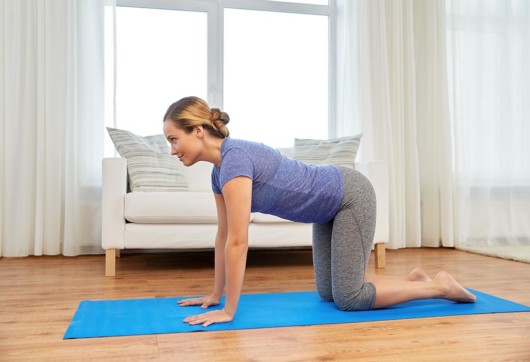From arthritis to back pain to migraines, chronic pain is exceedingly common. In fact, over 20% of adults in the United States live with some type of chronic pain.
If you’re among this percentage, you don’t have to accept constant discomfort as the norm. Chronic pain can feel inescapable, but if you know how to manage pain in your day to day life, you can ease your symptoms dramatically or even get rid of them all together.
To help you do this, we’ve compiled this guide to pain management techniques. Keep reading to learn everything you need to know.
Move Your Body More
For optimal health, you should be getting at least 150 minutes of physical activity every week, preferably more over time. When we’re in pain, we’re tempted to lie around, thinking that it’s going to lessen our discomfort. In reality, however, being sedentary makes many symptoms worse, as our bodies are designed to move. Aim for 30 minutes or more of aerobic activity every day, with 3 or 4 days of weight training mixed in.

If you feel like going to the gym and lift weights or run a treadmill, do it. But if you hate the idea of going to the gym, do something that you enjoy instead. This can be something as simple as:
- taking your dog for a walk in the evenings
- going to the park with your children (as long as you’re playing)
- or taking an afternoon swim
If you like what you do, you’re much more likely to stick to it.
Improve Your Diet
There are two pillars of health, exercise is one, diet is the other. Many people associate the word “diet” with extreme restriction, only eating food you don’t like, etc., but diet really just refers to what you use to fuel your body.
The first step when improving your diet is to do your best to cut out all of the junk. Processed foods loaded with sugar, salt, and other additives aren’t doing you any favors in terms of pain management. Instead, try your best to eat whole, nutrient-dense foods as often as possible. A nutritious diet can do wonders with improving your health. If you’re unsure what to buy, ask your doctor which vitamins are most beneficial for your condition and choose foods with high amounts of them.
A good habit to adopt is shopping the perimeter of the grocery store. Think about the foods that are along the walls of the store, it’s usually produce, meats, and dairy. Only go down the aisles when you absolutely need to. You can find things like whole grains and nuts in this area of the grocery store but avoid the snack aisles completely.
You should also be wary of frozen “health” meals. Some of them are fine, but more often than not, they’re packed with sodium and chemicals. When in doubt, read the nutrition label – you want foods with the fewest ingredients, all of which you recognize and can pronounce.
Pay Attention to Your Mental Health
The different facets of your health are connected. Stress and anxiety can do serious damage to your body, worsening your pain and other symptoms. By working on your mental health, improving your outlook, and surrounding yourself with uplifting people, you’ll notice that your pain becomes more manageable.
Take time out of your day for mindfulness practices. As with exercise, you should focus on activities that you enjoy rather than trying to force yourself to do something you dread. This can be making a daily gratitude list, meditating, practicing yoga, even taking a bath.

You’re looking for anything that relaxes you and makes you feel centered. Get to know yourself, something that worked for someone else might not work for you. For example, spending time with friends and family is important. However, if you’re introverted and find that time with others is more of a stressor than a benefit, this isn’t the right activity for you. Find what brings you joy and makes you feel energized.
Distract Yourself with Hobbies
We mentioned this earlier, but the worst thing you can do when coping with pain is to focus on it. Don’t sit around your house thinking about how much pain you’re in, that will only make it worse.
Believe it or not, distraction can be a game-changer. Focusing on things you love to do is a sort of natural pain killer, as it gives your mind something to occupy itself with, leaving less room for pain. So, are there any hobbies you’ve been wanting to try? Something that gets you active such as learning a sport or taking up hiking is preferable, but whatever you’re most interested in is what you should do.
This can be:
- crossword puzzles
- cooking
- knitting anything
If you’re outgoing, joining a club could be beneficial, as meetings will be more of a motivator to get up and out of the house.
Consider Natural Remedies
There are many natural treatments that have been proven to relieve pain and the symptoms of other ailments. Treatments like acupuncture, massage therapy, and chiropractic pain management can make you feel brand new without medication or any invasive procedures.
Do your own research to find which therapies you feel most comfortable with and give them a try. Whether you’re suffering from fibromyalgia, back pain, carpal tunnel syndrome, or another type of chronic pain, you can see positive results with alternative medicine.
Follow Your Treatment Plan
If you’ve been to a doctor for your chronic pain (and you should go if you haven’t), they likely gave you tips or even a full treatment plan to follow to ease your symptoms. It’s extremely important that you follow this plan, whether that is going to be a physical therapy, taking your medication as prescribed, or practicing any of the pain management techniques on this list. Your doctor knows what’s best.
You should also be open with your doctor about any questions or concerns you might have. If you’re prescribed a medication that doesn’t seem to be helping or has serious side effects, bring it up to them. Having an open, honest relationship with your doctor is often the key to an effective treatment plan.
Limit Alcohol
Normally, there’s nothing wrong with enjoying alcohol in moderation, but you should be careful with your alcohol consumption if you’re living in pain. First of all, leaning on alcohol to numb your symptoms is incredibly dangerous and can lead to dependency. But even if you aren’t using it for that purpose, alcohol has negative effects on your body that can worsen your pain.

Your body does its best restorative work while you’re asleep, meaning sleep couldn’t be more important for those with chronic pain. Alcohol disrupts your circadian rhythm, and if you’re already having trouble sleeping due to the pain, it can exacerbate your insomnia. You should be getting between 7 and 9 hours of good quality sleep every night and avoiding anything that causes you to lose sleep or sleep poorly.
Quit Smoking
If you’re a smoker, it’s time to quit. Tobacco products wreak havoc on our bodies, causing a wide variety of issues, including inhibiting your body’s ability to heal. Not to mention, smoking is directly linked to many types of cancer, arthritis, heart attack, stroke, and degenerative disc disease.
Smoking can be difficult to quit, but if you’re serious about chronic pain management, quitting is something that must be done.
Keep Track of Your Pain
Create a pain journal documenting your symptoms day-to-day. This can help both you and your doctor better understand your condition, which can be beneficial in building an effective treatment plan.
Keep track of your pain levels every day, and note any times of day that you notice your pain worsens or lessens. Write down what you were doing when you felt more pain and when it’s more manageable. You should also record your thoughts and feelings. You can create a separate journal for this part so that you don’t have to share it with your doctor, but noting your feelings will help you cope with your pain.
In addition, reading your journaling back will show you any progress you’ve made, remind you what worked and what didn’t, and motivate you to continue with your efforts.
Everyone deserves to have a high quality of life and to be able to do the things they love without pain. Use this guide on how to manage pain and learn what works for you. You may need to use a combination of remedies, but minimizing your pain will be well worth the effort it took to find a solution.



